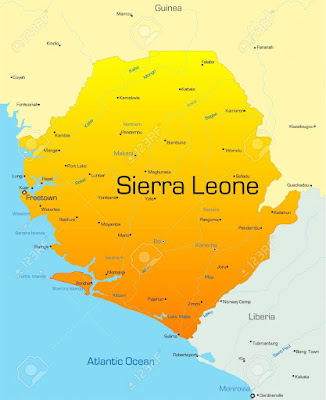Sierra Leone, U.S. compile Ebola database
With support from the United States Government through the Centers for Disease Control and Prevention (CDC), the Ministry of Health and Sanitation (MoHS) and its partners have launched the Sierra Leone Ebola Database (SLED) Family Reunification program.
The SLED program is based on information recorded during the Ebola epidemic by thousands of Sierra Leonean surveillance officers, burial team members, laboratory technicians, and data managers.
The SLED Team of Sierra Leonean and CDC data managers was able to organize and collect more than 500,000 alerts, burial, and other patient records, creating the most complete collection of data from the 2014 – 2016 Ebola epidemic.
The primary objectives of SLED are to assist family members to locate the graves of their loved ones buried during the epidemic (through the SLED Family Reunification program), and to create a resource for public health research by providing secure data access via the CDC Research Data Center.
Dr. Amara Jambai, Deputy Chief Medical Officer at the Ministry of Health and Sanitation, says he is happy to witness the fruition of what started as a simple idea, which became better and more interesting over time.
“From our contact tracers to the gravesites, we have linked data that can speak sense to one another. With CDC support, we are proud to have the most comprehensive imaging of all efforts around the Ebola epidemic in Sierra Leone. The SLED is a reservoir for future researchers, with relevant data to not only improve healthcare delivery, but also take scientific research to the next level.”
He added that Dr. Tushar Singh, U.S. CDC Country Director appreciated their very close working relationship with MoHS, saying CDC is happy to be part of the resilience Sierra Leone’s health system has displayed.
“The U.S. Government support for the SLED project helps to advance relationship with the Government of Sierra Leone and to create a resource for research capacity building and future epidemic prevention," Singh said.
The meeting attracted participants from Freetown City Council, CDC, Concern Worldwide, Western Area tribal heads, Births and Deaths Department, key ministry representatives and the media.
CDC began working in Sierra Leone researching Lassa fever in the 70s. In 2008, the agency expanded its reach with the U.S. President’s Emergency Plan for AIDS Relief, building laboratory and surveillance capacity.
During the 2014-2016 Ebola response, more than 700 CDC staff served on over 1000 deployments. It was CDC’s largest outbreak response ever in a single country. In 2015, a permanent CDC Country Office was established to focus on Global Health Security efforts. In post-Ebola Sierra Leone, CDC has been working with the Ministry of Health and Sanitation and its partners to develop the country’s capacity to prevent, detect, and respond to diseases affecting Sierra Leoneans.




Comments
Post a Comment